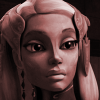-
Posts
1,429 -
Joined
-
Last visited
Content Type
News Articles
Tutorials
Forums
Downloads
Everything posted by Cerez
-
Yes, I'm pretty sure it is the first number of NPCs that it loads on the map, as you'll sometimes find it stops working with one bunch of NPCs, and then continues working with another few. So it's not that you've hit the cap as a player. Reloading the level produces exactly the same result with the same NPCs, so the behaviour is consistent. The first number of NPCs loaded are dismember-enabled, and the rest is treated standard. What you're proposing does sound useful. We shouldn't have to change the game's code to set how many NPCs can fall apart in the game. This would be a useful update to OpenJK, but we have to be careful, as this hardcoded setting has been a part of the game since the beginning, and any changes to it will need to be tested thoroughly.
-
This fix only works if you're custom compiling OpenJK. Otherwise, what's happening in the game is that there is a hard-coded limit on the amount of NPCs that are decap-enabled -- by default it's 16. That means if there are more than 16 NPCs loaded on a level, only the first 16 loaded will be dismemberable. To raise this limit you need to change the MAX_SABER_VICTIMS line in the code, as @@MoJo JoJo has instructed earlier in this thread, and build a custom OpenJK SP binary for the game with this change applied. I recommend a minimum of 64 if your hardware can handle the game smoothly.
-
Go with what you personally like the best (and that will look best for downscaling/simplifying). They all look great.
-
Yep, we don't. Your best bet is to compare it with a couple of different reference shots, as you've done here -- and it looks like it's fine. We could spend a year refining it, and it would still not match the reference material 100%. We've got to stop somewhere. You have it as close to the real thing as practically possible now, I agree. It will be interesting to see how the mouth behaves once you start to animate speech and facial expressions. You'll see then whether you've made the right design choices in this first model. Looking forward to seeing it in action. Fingers crossed.
-
Sorry, I haven't been spending much time on here lately. The hair is looking great, but the nose and the mouth could be positioned a tiny bit higher, giving the surface area of the chin a little more depth to match the reference closer. Measure the distances from chin to lips, and chin to nose in your superb reference shot here: Their position is a little bit too low to reference on the face currently. Otherwise looking fabulous. I like her face with the goggles on a lot.
-
You'll need to separate those meshes out from the head mesh and name them as such (head_face, head_eyes_mouth), and then re-weight them: These new meshes will also need to be placed under "head" in the hierarchy tree of the model. Important: Do NOT move the bones of the skeleton!
-
Yepp. Load a Raven model in and have a look at which bones around the face what parts of the face mesh are weighted to, and to what extent. You'll need to play around with the weighting to get it to behave right with most facial expressions in the game. The beginning few frames of the default animations in ModView help to judge it as they are stretching the mouth to extremes. Of course, you'll need to also add a 'mouth box' from one of the Raven models, which will be what the player sees as the inside of the mouth when the character opens their mouth, and weight this, too, to the right facial bones, so that it opens with the mouth movement.
-
In most cases the driver software tries to automatically assign the right graphics card for the game, but it doesn't always manage to choose the right one for the task. Using the NVIDIA Control Panel, you can manually override this assignment for the game. 1. In the NVIDIA Control Panel select "Manage 3D settings" in the left-hand-side list. 2. Click on the "Program Settings" tab. 3. Select OpenJK (or JKA) from the list of software, or "Add" it to the list. 4. Switch the "preferred graphic processor" from "Use global setting" to "High-performance NVIDIA processor". 5. Click "Apply" and wait a few seconds, then close the NVIDIA Control Panel and try running the game.
-
North coast of Tassie (Tasmania), Australia.
-
http://jkhub.org/topic/4406-modeling-tutorials/
-
Depending on what version of Linux you are using, and what partitioning system, you should be able to expand your "/home" partition to the size you want later. You can give it less first, and then expand it to have more space from the non-formatted (freed) space on your hard drive. You can always add a new partition and copy files to it on any operating system. It doesn't have to be the "/home" partition, or even in the EXT4 format for you to store and access files from it on Linux. FAT32 works almost just as well for instance (and is read-write accessible both from Windows and from Linux).
-
Hi. Help with what, exactly? o.O
-
If you have a dual graphics card, make sure the game is using your non-integrated (non-Intel) one.
-
Edit: I see two possibilities: 1. The current audio driver doesn't work with your sound card properly. 2. The sound card is muted at the core level. I can't know for sure what's happening until you give me your "aplay" output. In the latter case, you can install the "alsa-utils" package, and use the Terminal software called "alsamixer" to unmute the sound card at the core level: https://wiki.archlinux.org/index.php/Advanced_Linux_Sound_Architecture#Unmute_with_alsamixer
-
Sorry it took me a while to answer. I didn't have my other computer at hand to check. I have version 2.68 of Blender working with @@mrwonko's plugin suite. To bypass the "no .gla" error message, all you have to do is copy the "_humanoid" folder to your working "base" folder, as shown here: Then, in the plugin's settings (when you select File > Import > JA Ghoul 2 model) make sure to scroll down in the left pane, and in the empty field where it says "Base path" copy and paste (or enter) the path to your working "base" folder (e.g. "Users/Cerez/Desktop/base/"). This way the plugin will know where to look for the "_humanoid/_humanoid.gla" file. Then select your intended GLM in the file selector, and click import. Voila.
-
Yupp, you'll need GIMP or Photoshop, and off you go. Make sure you stretch the big background image vertically, but keep the images the same dimensions as what I have there. The game squishes the big image vertically when it loads it as the console's background.
-
What is the exact message/problem that you are getting? Can you paste it here?
-
If you are intent on using that particular model, then you'll have to do some kitbashing/modelling magic yourself. You can import the model, preserving its UV maps and weights, into Blender using the appropriate plugins, and then you can add a mouth from one of the Raven models, and see if you can slice open and re-weight the mouth without any bugs jumping in your way. Feel free to study my Ahsoka, or any other character model to see how the face is weighted (to which bones). I won't say this will be easy to do. In my experience, to do this properly for cinematics it's anything but quick and easy. Alternatively, I think @Toshi's Yoda has a moving mouth if I'm not mistaken: http://jkhub.org/files/file/1005-toshis-yoda/
-
That, and the taunts and grunts, which will remain Jaden's default -- so if you're switching from a male character to a female one mid-game, you're gonna have some funny stuff happening.
-
And of course this cult classic:
-
If the sound file is scripted to be sounded on the NPC's voice channel (in an "affect"), the NPC will move their lips to it when the audio plays. The only exception is when the character model has not had their mouth rigged. Try it with my Ahsoka model. I've made sure to rig the mouth and face in detail for this purpose (cinematics). Another good one for testing this is Slaughter's Alaora (a good skin for the default Raven twi'lek). All of @Hapslash's and @@DT85's popular models also have proper mouth rigging.
-
Is this for Single Player or Multiplayer game mode? Most player models are made for Multiplayer. They won't show in Single Player game mode -- if that's what you're desperately trying to see happen. Only a few player models have Single Player gameplay support, and if they do, it usually clearly says so in their readme file. My advice is to always read the readme to see how to use the mod properly, especially when you're starting out.
-
Are you a new Mac user? You can't run Windows executables (EXE, BAT) and libraries (DLL) on a Mac. You need the app bundle (APP) @@ensiform has linked you to above. 1. Double-click the disk image (DMG) to mount it. 2. Open up your Jedi Academy app bundle by right-clicking on it and selecting "Show Package Contents", and navigate inside it until you can see the "base" folder. 3. Copy the OpenJK app bundle (from the mounted disk image) there with the other app bundles, just above "base". 4. Run OpenJK by double-clicking the OpenJK app bundle. You can drag it to your Dock for easy access. And I trust that you've installed the Mac version of SDL2 into the ~/Library/Frameworks/ folder (the one that's a folder/bundle with the ".framework" extension).
-
I swear the Urban Dictionary stands on the opposite side of Wikipedia -- it is as useless and misleading as tactful and useful Wikipedia as a community powered dictionary is. Welcome on-board, matey! I definitely get all my sleeping mattresses here, so I know where you're coming from.
-
No, there isn't. Should there be? How should I hook up the mid-waypoint? Edit: Well, I've added a fourth, mid waypoint, hooking it up this way: { "classname" "waypoint" "origin" "255 -3276 455" "target" "wpoint1" "target2" "wpoint2" "target3" "wpoint3" } o | o- - -o But it made no difference in the NPC's behaviour whatsoever. And once again, I've noticed the NPC switch waypoint_navgoals in the middle of a walk.




